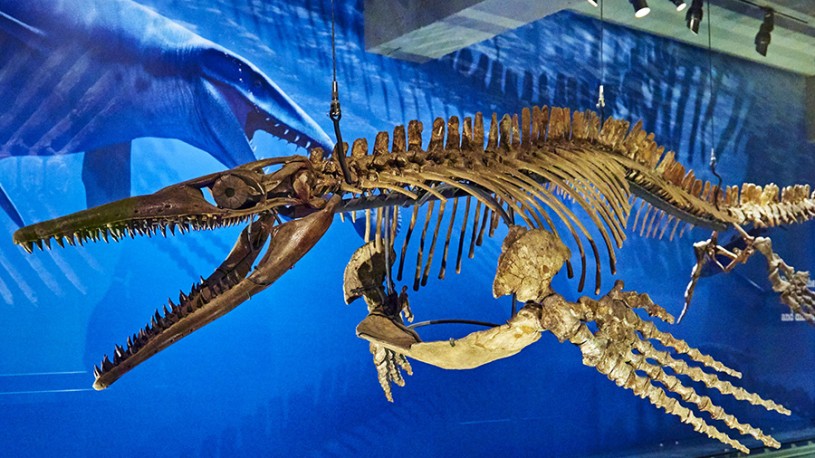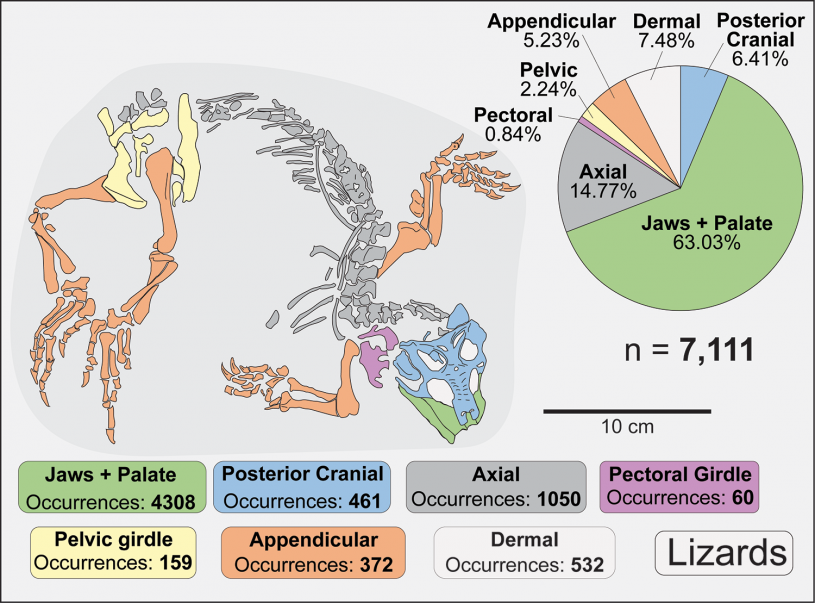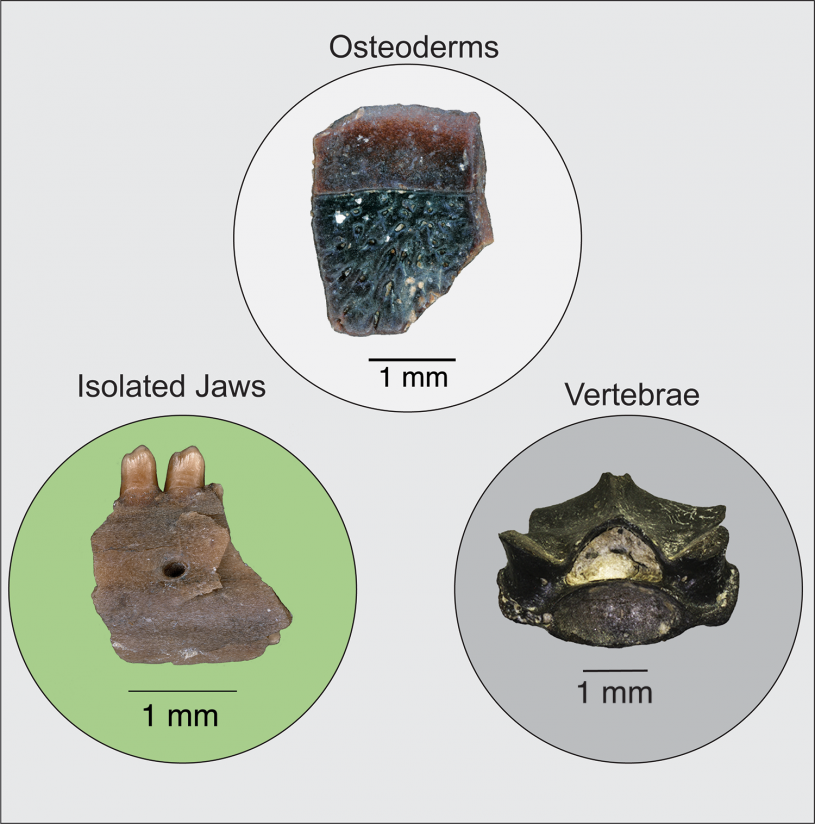Los Angeles, CA (January 31, 2022) — Making up the vast majority of paleontological collections, less complete fossils like jaws, teeth, and ribs have made researchers wonder whether they had anything reliable to say about evolution. Published recently in Paleobiology, a new study led by Hank Woolley, a graduate student-in-residence at the Natural History Museum of Los Angeles County (NHM) Dinosaur Institute, finds that these fragmentary fossils can contain reliable phylogenetic information. Findings like these increase the scientific value of all specimens housed in collections, not just the most complete ones.
“This is exciting, because results like ours increase the scientific value of incomplete specimens housed in museum collections, and that allows us to include more of Earth’s extinct biodiversity as we continue to piece together the past,” says Woolley.
Fossils captivate the imagination, especially the rare, remarkably complete specimens that decorate the exhibit halls of museums around the world, but behind-the-scenes museum collections are teeming with less complete fossils that often never see the public eye.
"We often only get to hear about excavations of exceptionally complete fossil animals and plants, but in the background, the majority of the collections that paleontologists make in the field is made up of incomplete and fragmentary fossils,” says Woolley. “It's historically been hard to quantify how trustworthy these fossils are, since they're so incomplete! What we do in our study is attempt to quantify just how reliable incomplete fossils are when we try to figure out their evolutionary relationships."
Assessing evolutionary relationships of fossil organisms remains one of the great ongoing endeavors of paleontology and the study of fossils. Whenever paleontologists discover an incomplete fossil, there is never a shortage of questions to ask: What species did this fossil fragment belong to? Who were that fossil organism’s closest evolutionary relatives at the time? How does this ancient organism relate to organisms alive today?
Woolley and his team wanted to test whether all of those less complete fossils filling up museum collections could help reliably answer those questions. To do so, they used over 6,500 specimens from NHM and other major natural history collections of fossil squamates – the group that includes lizards, snakes, and their extinct marine relatives, mosasaurs.
First, they identified the most common partial fossils across these collections. While complete skulls are the gold standard – capturing key features that let paleontologists know how closely two species sit on the tree of life – the team found that jaws, teeth, ribs, and vertebrae were the most common fossils.
Woolley and his team then used a series of sophisticated phylogenetic comparative methods, metrics, and tests to show that these incomplete representations of the skeleton in the fossil record do not mislead our interpretations of evolutionary relationships of lizards, snakes, and their relatives.
"If the fossil record is like a book with pages missing, we've shown that the missing pages aren't torn out at random,” says Woolley, “but more importantly, we can still read the story."
Their study reveals that the less-complete fossils making up the bulk of paleontological collections do in fact contain reliable phylogenetic information, reinforcing the importance of natural history collections for future research.
“This is exciting, because results like ours increase the scientific value of incomplete specimens housed in museum collections, and allows us to include more of Earth’s extinct biodiversity as we continue to piece together the past,” says Woolley. “Even these incomplete fossils can guide our knowledge of evolution, so we can be more confident in our placement of these paleontological ‘twigs’ on the tree of life.”
The more complete our picture of the past is, the more capable we will be in accurately predicting and managing changes in today’s ecosystems as the climate crisis and global change continue to impact life on Earth.
About the Natural History Museums of Los Angeles County
The Natural History Museums of Los Angeles County (NHMLAC) include the Natural History Museum in Exposition Park, La Brea Tar Pits in Hancock Park, and the William S. Hart Museum in Newhall. They operate under the collective vision to inspire wonder, discovery, and responsibility for our natural and cultural worlds. The museums hold one of the world’s most extensive and valuable collections of natural and cultural history—more than 35 million objects. Using these collections for groundbreaking scientific and historical research, the museums also incorporate them into on- and offsite nature and culture exploration in L.A. neighborhoods, and a slate of community science programs—creating indoor-outdoor visitor experiences that explore the past, present, and future. Visit NHMLAC.ORG for adventure, education, and entertainment opportunities.
MEDIA CONTACT
For interviews and additional imagery, please contact Sally Márquez, smarquez@nhm.org. Written by NHMLAC Digital Writer, Tyler Hayden.


